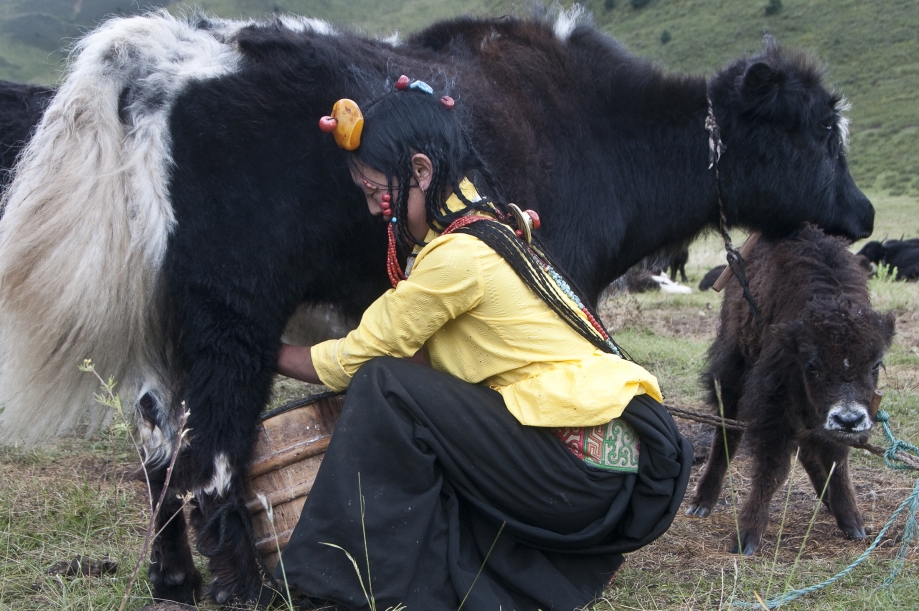
Vanishing Nomads, Vanishing Grasslands
Michael Buckley | Tibet, Tibet
Photographer: Michael Buckley
Exhibit Title: Vanishing Nomads, Vanishing Grasslands
Location: Tibet, Tibet
Vanishing nomads, Vanishing Grasslands
Tibetan nomads have been guardians of the great grasslands of Tibet for four millennia. But starting from the 1980s, the CCP has deliberately targeted Tibetan nomads to completely remove them from their grassland habitat, and send their yaks to slaughterhouses. This policy involves cultural genocide of around 2 million Tibetan nomads, with the majority now settled in concrete ghettoes where they languish without jobs as many do not speak Chinese, and job opportunities require Chinese language. The grasslands and yak-herding evolved over millennia, and removing nomads and their yaks from this equation has seen dire consequences such as encroaching desertification at a rapid pace. Meantime, Chinese megadams and mega-mining proceed with massive impact on the grasslands ecosystem, which is a major carbon sink for the whole of Asia.
ThunderHorseMedia.com/n2n
= find out more from photographer's short documentary, "From Nomad to Nobody". See also the photographer's 510-page digital photobook 'Tibet, Disrupted', published in 2025 on Amazon Kindle.
The high-altitude grasslands of Tibet and Mongolia cover a huge area of Central Asia. This grassland ecosystem is a highly valuable carbon sink. And the grasslands hold the soil together, allowing life to thrive. Starting with the yaks and goats and sheep of nomads. Nomads and their animals have co-existed with the grasslands for millennia. Grasslands are fertilised by the droppings of nomad animals. Grasslands hold the soil together and keep moisture in the soil, If desert encroaches on the grasslands, the grasslands turn into dust-bowl wastelands.
Chinese policy on the grasslands is extremely short-sighted. Nomads are the stewards of the grasslands. Chinese officials have come up with all sorts of excuses for wholesale removal of the nomads, claiming for instance that nomad over-grazing of the grasslands is ruining them. In fact, Chinese mega-mining of the grasslands is a far greater threat, churning up entire grassland regions and turning them into dust. Over 125 minerals have been discovered in Tibet, ranging from uranium and lithium to copper. Extraction of lithium salts in western Tibet and NE Tibet have wrecked the pristine lakes of Tibet. At stake here is an entire ecosystem: the grasslands.
Chinese authorities have created large so-called national parks in various regions of Tibet. But these are 'paper parks', existing on paper only. China's concept of a national park is very different from that concept in the West. Ludicrously, Chinese authorities turn a blind eye to hunting, logging, mining and dam-building within the boundaries of so-called national parks and wildlife reserves.
China has used the creation of 'national parks' and 'wildlife refuges' as an excuse to evict Tibetan nomads en masse, claiming that nomads cannot live within the confines of a national park. However, neighbouring Bhutan presents a very different perspective. Over 50 percent of Bhutan's land area has been set aside for national parks and wildlife sanctuaries. And within a handful of these parks live nomads, such as the Layap nomads in part of Jigme Dorji National Park, and the Brokpa nomads living in Sakteng Wildlife Sanctuary in the far east of Bhutan. Nomads make fine guardians of nature areas, and they would make fine park rangers. But Chinese authorities do not seem at all interested in employing evicted Tibetan nomads as park rangers.
Make Comment/View Comments